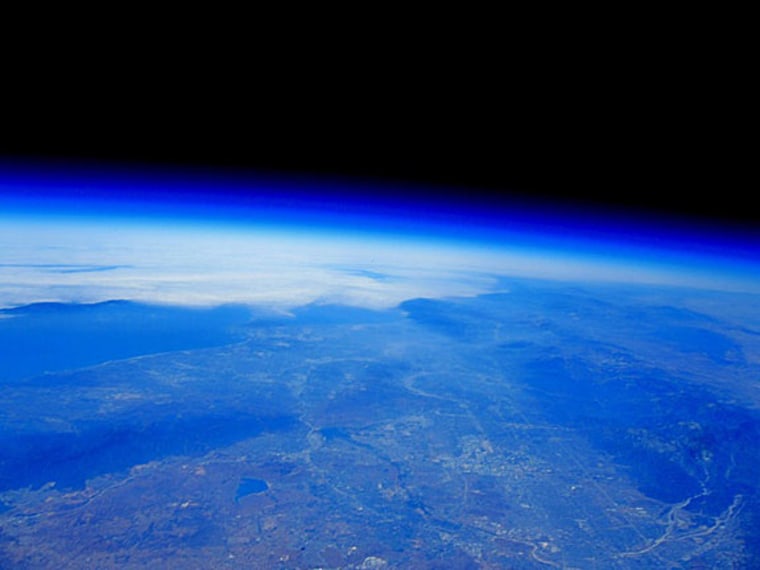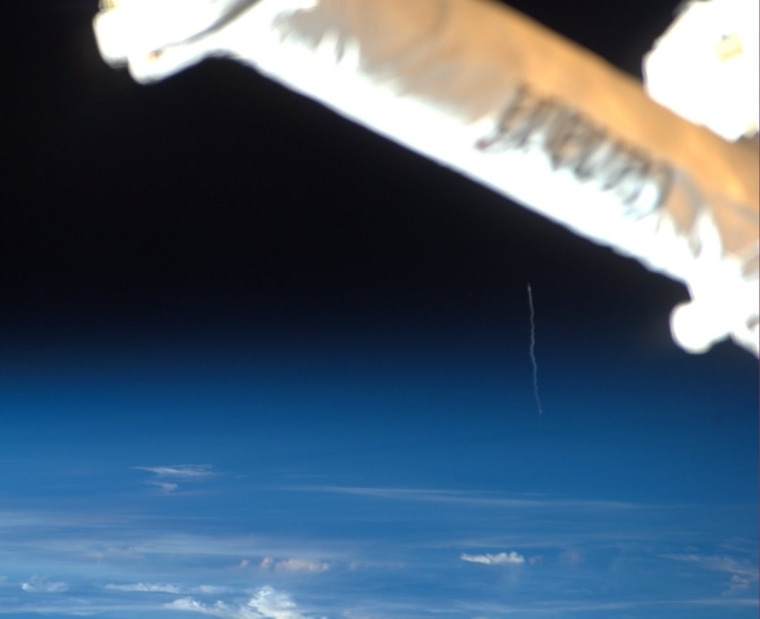
The space shuttle Discovery is poised for its final blastoff today at 4:50 p.m. ET, on a mission to the International Space Station, and all sorts of folks are have their eyes and ears tuned in to the finale, helping those of us who aren't at Kennedy Space Center follow all the action.
A project aimed at getting school-age kids amped up about Discovery's final mission is launching a helium-filled balloon equipped with cameras and other gizmos to photograph the shuttle as it climbs into space from an altitude of 100,000 feet. The balloon will also provide live video during the mission. The video is due to be streamed on UStream, Challenger.org and OnOrbit.
Quest for Stars and the Challenger Center for Space Science Education will time the launch of the "Robonaut-1" payload from Florida so that it is in position for Discovery's supersonic transit of the stratosphere. Bobby Russell, a spokesman for Quest for Stars, said some of the high-definition, high-altitude views should be available in real time — but the "jaw-droppers" won't be released until Robonaut-1's payload falls back to Earth and is retrieved.
"We think we might be knocked from the sky by the supersonic shock wave," Russell said.
For more information on the project, check out this news release. And for another view of a launch from space, here's a photo showing last week's launch of the European Space Agency's Kepler ATV-2 cargo craft, as seen from the space station:

Watch on the Web
NASA TV, the space agency's multiplatform feed for shuttle junkies over the years, is of course still available and now streamed over the Internet in HD. Familiarity with human-spaceflight geek-speak helps follow along the commentary. We'll be streaming NASA's video coverage here on msnbc.com.
If you want a little video-game ambience with your liftoff, you could join Sony and NASA and watch a live stream of the launch from within PlayStation Home — an online virtual world you can access from PlayStation 3 game machines. Check out Winda Benedetti's post for more information.
Tune in
Rather just listen in? Then tune in to SomaFM Mission Control, an Internet radio station that will be treating listeners to a mix of ambient and experimental music along with live audio from the space shuttle mission.
Update for 6 p.m. ET: Spotty cell phone coverage hampered real-time data collection from Robonaut-1, and the balloon apparently hit bad weather during its ascent. The balloon's altitude was estimated at 33,000 feet when cell phone coverage ended. The project's organizers are still hoping that they'll recover some launch images from the payload. "We are now turning to retrieval," Quest for Stars reported in a Twitter update.
More stories about Discovery's last mission:
- Discovery's final crew: Experienced and friends
- Get the latest on Discovery's final mission
- Robot butler hitching ride to orbit on shuttle
- Shuttle payload includes more closet space
- By the numbers: Basic facts about the shuttle
- Got a great launch picture? Please share it
John Roach is a contributing writer for msnbc.com. Connect with the Cosmic Log community by hitting the "like" button on the Cosmic Log Facebook page or following msnbc.com's science editor, Alan Boyle, on Twitter (@b0yle).